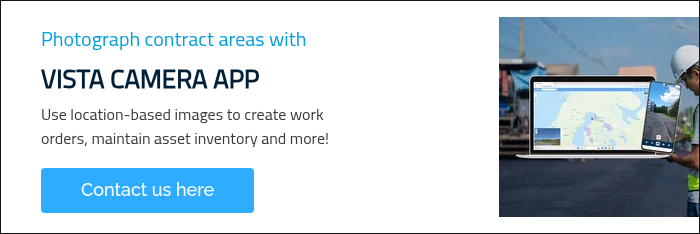Maintenance of roads and streets is a vital part of the long-term care of our transport infrastructure. As technology evolves, so too do the methods used for road maintenance. One significant new trend is utilizing image data image data in digital road and street maintenance management solutions. In this blog, we briefly discuss how this new technology works and why it is important.
How do images help in road maintenance?
The integration of images into digital road maintenance management is based on the need to combine two powerful features:
- real situation understanding created by the images of the target
- the second is the observations and conclusions made by professionals from the target's images
New technologies also enable AI-based image analysis utilizing machine learning and image reconigiton. However, nothing beats the observations made by professionals based on years of experience from the subject. With the new image management solution, professional observations can be directly integrated into operations management, for example as work orders, deviation observations, etc.

A common use case of the real situation understanding created by images of the target is before and after images of the contract area. This method serves as a crucial tool in ensuring that the contractor adheres to the agreed terms and conditions of the project. By capturing visual evidence through dashcams before and after work commences, contractors can verify the quality of the completed work and confirm that all aspects of the contract have been fulfilled.
While 360-degree images offer additional benefits in providing a comprehensive view of the site, the choice of imaging technology ultimately depends on the specific requirements and scope of the project. Image data not only enhances transparency and accountability in road maintenance projects but also facilitates effective communication and collaboration between all parties involved.
Image metadata can also be used in the utilization of image data. By capturing information such as the time, location, and device used to capture the image, metadata provides valuable context and authenticity to the visual data. This additional layer of information enhances the accuracy and reliability of the observations made by professionals, allowing for better decision-making in maintenance operations.
It can also track the progress of maintenance tasks, providing a detailed record of work completed and any deviations from the original plan. This historical data can be used for performance evaluation, quality assurance, and future planning purposes. Overall, image metadata complements the visual data captured, ensuring that road maintenance projects are executed efficiently and effectively.
Why is utilizing image data in road maintenance so important?
This innovative technology revolutionizes the way road maintenance is carried out by leveraging the power of image data. Gone are the days of relying solely on manual inspections and reports from road users to identify issues. With the integration of image data into digital management systems, potential damages can be spotted and addressed promptly, preventing them from escalating into larger problems or posing safety hazards.
By combining the keen insights of experienced professionals with the efficiency of AI-based analysis, road maintenance operations become more streamlined and effective. This fusion of human expertise and technological advancements ensures that maintenance tasks are executed swiftly and accurately, enhancing overall road safety and functionality.
The utilization of image data in road maintenance management not only optimizes operational efficiency but also contributes to significant cost savings in the long run. Through proactive monitoring and timely interventions, resources are allocated more effectively, preventing unnecessary repairs and minimizing disruptions to traffic flow.
This approach to road maintenance exemplifies the transformative potential of technological innovations in traditional industries. As a forward-thinking company, Autori is at the forefront of driving these advancements and continuously refining its solutions to meet the evolving needs of its clients. Join us in embracing the future of road maintenance through the integration of image data and experience the benefits of a safer, more efficient transport infrastructure.
In conclusion
The new integration of image data into digital road maintenance management solutions is a significant step forward in road maintenance. It not only makes the maintenance of roads and streets more cost-effective, but it also improves traffic and workplace safety. This is just one example of how technological development enables changes in traditional industries and enhances their operating models. Autori is proud to be part of this change and continues to develop innovations for its customers.
Follow us also on social media
Tags:
Road MaintenanceSep 29, 2023 8:51:53 AM



